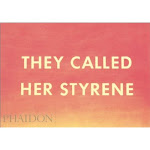
Sunday, February 22, 2009
Thursday, February 19, 2009
Monday, February 16, 2009
Inspiring Sea Creatures: Spirobranchus giganteus
Wednesday, February 11, 2009
Thursday, February 5, 2009
From Military Nerve Gas to Agricultural Pesticide: What a Great Idea…
Organophosphate chemicals were developed in the 1930’s during military chemical warfare research. The infamous Sarin nerve gas is very similar in structure and toxicity to some of today’s widely used pesticides. After the end of World War II, the Marshall Plan channeled these and other military chemicals into the newly developing market of industrial agriculture.
Organophosphate Pesticides (OP’s) became more popular in industrial agricultural when toxic organochloride pesticides like DDT fell out of favor. Researchers felt OP’s would be a safer alternative because they do not persist in the environment as organochloride pesticides do. OP breakdown readily when exposed to sunlight and air, but for those farm families and animals that come in direct contact with them, OP’s pose a serious risk.
OP’s contain an ester of phosphoric acid similar in structure to the phosphate groups of RNA and DNA. Part of what makes organophosphates so effective in chemical warfare is their interference with acetylcholinesterase. This important enzyme breaks down acetylcholine in the synaptic cleft and the postsynaptic neuron or muscle cell once a signal has been received. If acetylcholinesterase cannot do its job properly, acetylcholine builds up, causing persistent overstimulation of the nerves that eventually renders the neural pathway dysfunctional.
Acetylcholine is especially important for neural development in utero, as it is involved with brain cell mitosis, differentiation, and migration. OP exposure disrupts these crucial processes and has been proven to cause developmental disabilities in humans and animals.
Interestingly, some of us are genetically predisposed to more serious implications from OP exposure. According to the 2001 report, “In Harm’s Way: Toxic Threats to Child Development”,
The report goes on to say that individuals who carry a gene that limits the functioning of the enzyme paraoxonase are also more vulnerable, as this enzyme works to detoxify OP’s from the body. Factors such as “age, body weight, height, gender, pregnancy, and liver disease” (IHWp54) have also been shown to effect an individual’s level of acetylcholinesterase.
We knew it was poisonous to our “enemies” so we started putting it on our food.
Sources:
Schettler, Stein, Reich, and Valenti. “In Harm’s Way: Toxic Threats to Child Development.” Greater Boston Physicians for Social Responsibility. Cambridge, MA 2001.
http://en.wikipedia.org/wiki/Organophosphate
“Fatal Harvest: The Tragedy of Industrial Agriculture” Andrew Kimbrell, editor. Foundation for Deep Ecology. Sausalito, CA, 2002.
Organophosphate Pesticides (OP’s) became more popular in industrial agricultural when toxic organochloride pesticides like DDT fell out of favor. Researchers felt OP’s would be a safer alternative because they do not persist in the environment as organochloride pesticides do. OP breakdown readily when exposed to sunlight and air, but for those farm families and animals that come in direct contact with them, OP’s pose a serious risk.
OP’s contain an ester of phosphoric acid similar in structure to the phosphate groups of RNA and DNA. Part of what makes organophosphates so effective in chemical warfare is their interference with acetylcholinesterase. This important enzyme breaks down acetylcholine in the synaptic cleft and the postsynaptic neuron or muscle cell once a signal has been received. If acetylcholinesterase cannot do its job properly, acetylcholine builds up, causing persistent overstimulation of the nerves that eventually renders the neural pathway dysfunctional.
Acetylcholine is especially important for neural development in utero, as it is involved with brain cell mitosis, differentiation, and migration. OP exposure disrupts these crucial processes and has been proven to cause developmental disabilities in humans and animals.
Interestingly, some of us are genetically predisposed to more serious implications from OP exposure. According to the 2001 report, “In Harm’s Way: Toxic Threats to Child Development”,
“About 4% of the population carries a gene that produces a poorly functioning form of acetylcholinesterase. This greatly increases an individual’s vulnerability to cholinesterase inhibition by OP’s, since the diminished reservoir of functioning enzyme is more easily overwhelmed by OP’s.” (IHWp54 )
The report goes on to say that individuals who carry a gene that limits the functioning of the enzyme paraoxonase are also more vulnerable, as this enzyme works to detoxify OP’s from the body. Factors such as “age, body weight, height, gender, pregnancy, and liver disease” (IHWp54) have also been shown to effect an individual’s level of acetylcholinesterase.
We knew it was poisonous to our “enemies” so we started putting it on our food.
Sources:
Schettler, Stein, Reich, and Valenti. “In Harm’s Way: Toxic Threats to Child Development.” Greater Boston Physicians for Social Responsibility. Cambridge, MA 2001.
http://en.wikipedia.org/wiki/Organophosphate
“Fatal Harvest: The Tragedy of Industrial Agriculture” Andrew Kimbrell, editor. Foundation for Deep Ecology. Sausalito, CA, 2002.
Wednesday, February 4, 2009
I Capture the Science Library
The other night I finished Dodie Smith's novel, "I Capture the Castle" and it has really inspired my journal writing. The narrator is a wonderful seventeen year old girl living in a destitute castle in England with her brother, sister, father, and mother in law. She loves the all very much and does an excellent job of recording the details of their personality quirks and emotional tribulations in her diary. For most of that book, I was wondering, "Really, now, why am I reading this?" but then I mentioned it to Patrick-Baby-Boy and he said, "Oh, its a writer's novel!" That made sense. Its also about love and freedom.
The other day I came home to the lovely puppy who is doing very well, and also to package from Sivas! He had sent me a very thoughtful gift - a biography of Andrew Wyeth! He read what I wrote about the Olson House and the day I learned that instincts can be dead wrong, and he bartered the book for me at the Bloomsburg Anarchist Book Co-op. When I opened it and realized he had read what I wrote and thought about it and organized the book for me, I felt very seen and heard. I spent a few hours that night reading the biography. I think this book was written for people who love his work because it starts out with the story of Christina's World, up there in Thomaston with the Olsons. This was much better than the formulaic approach of starting out with Wyeth's childhood. There will be time for that later.
Today I gave a tour to other students who have applied to this program. My friend Petro and I answered all their questions and talked to them about our experiences. It was neat to think that not too long ago I was visiting on my tour wondering if I'd be able to come here. So far things are working out very well. I'm happy to see so many people going into medicine who want to minimize the prestige of doctors in the world.
Subscribe to:
Posts (Atom)












